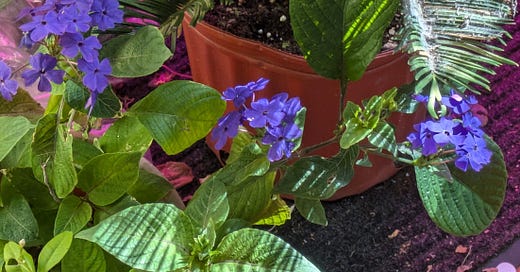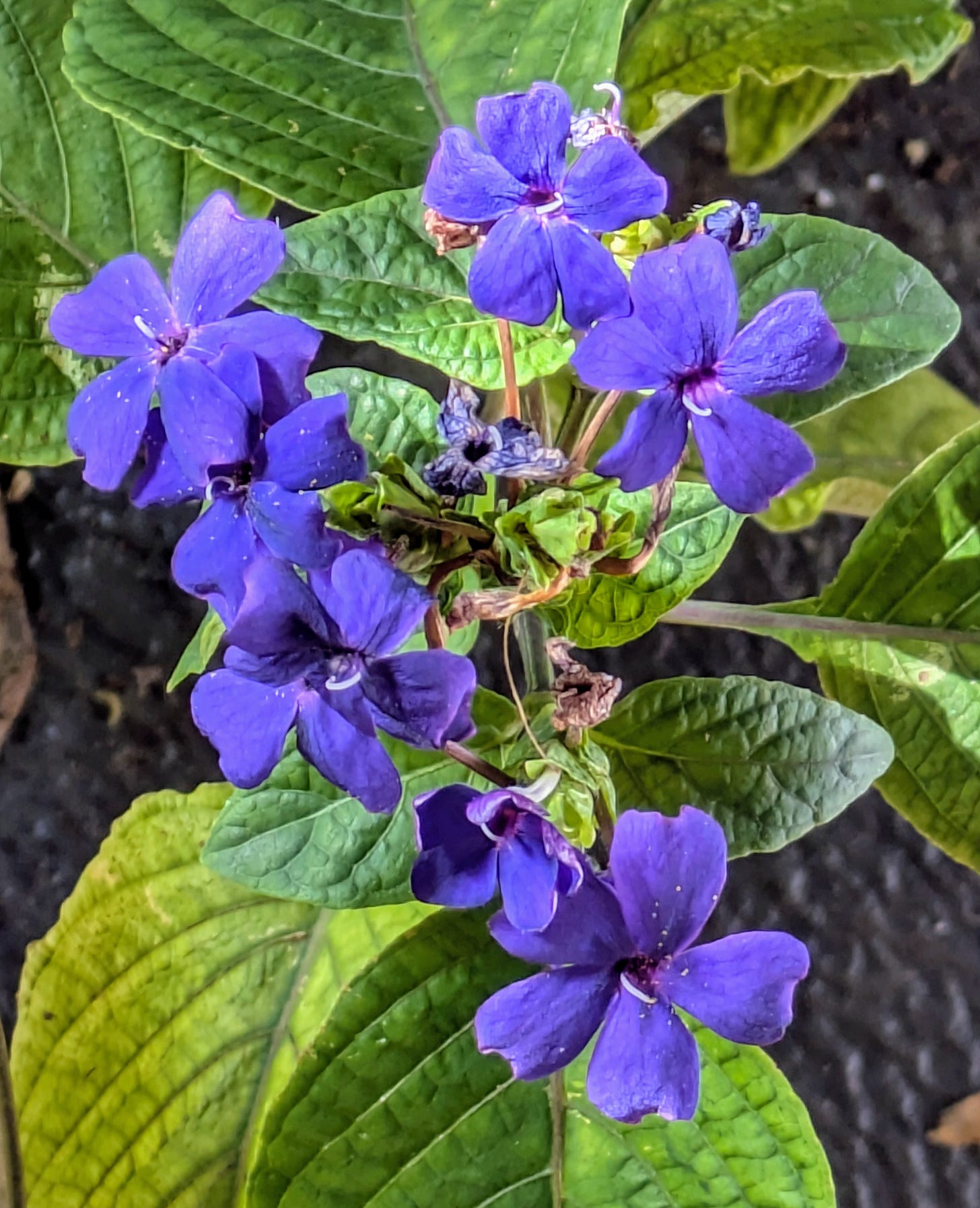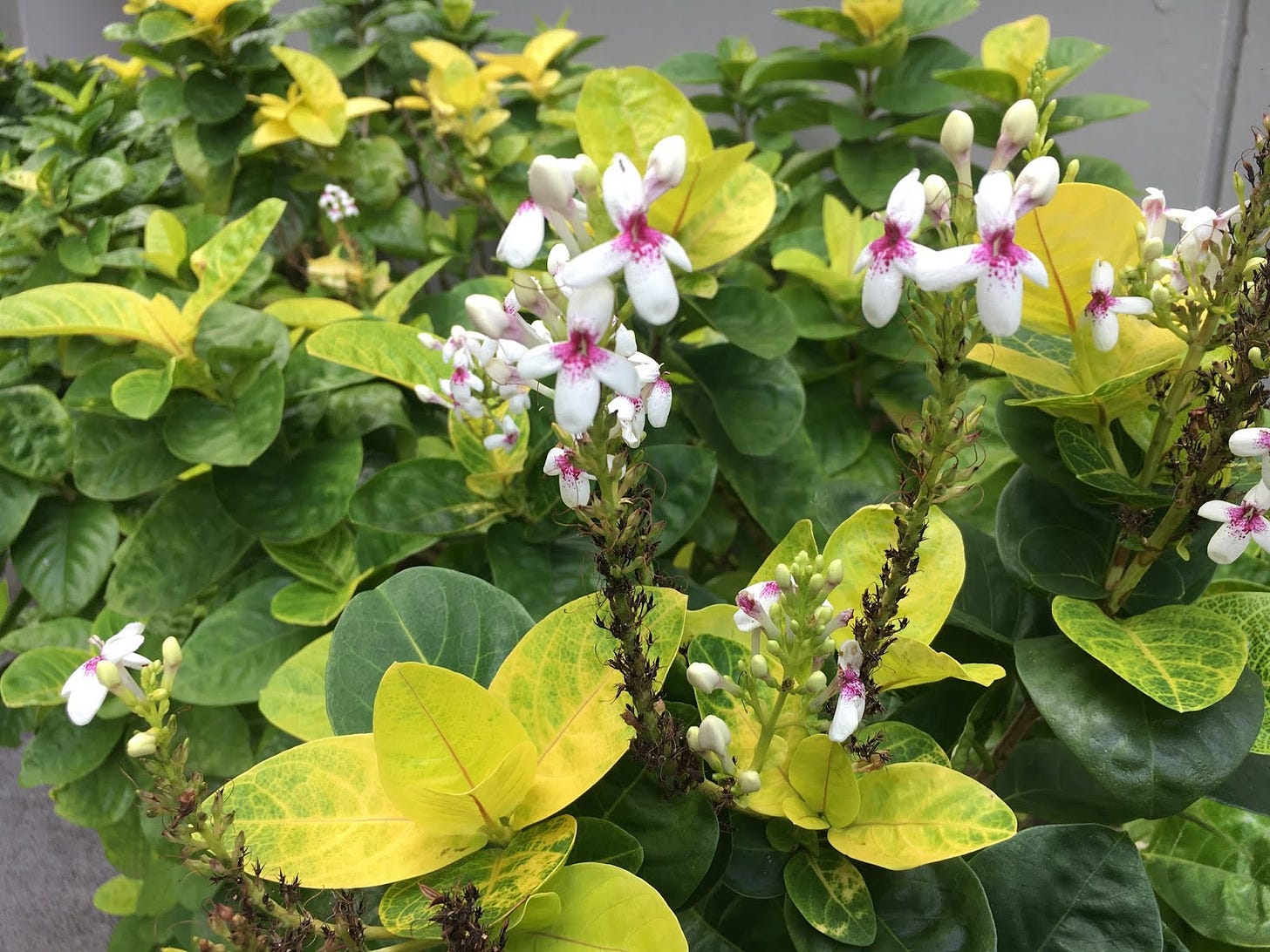Stalking the blue eranthemum
The title of this piece is a nod to Euell Gibbons, who in 1964 published “Stalking the Blue-Eyed Scallop”, about utilizing common and unusual seafoods, as well as seaweeds and coastal edible plants.
Since flowers that are true blue (or close to it) are relatively uncommon in the plant kingdom, Eranthemum pulchellum (sometimes called blue sage by those who don’t mind creating confusion with true sages), has long been coveted by indoor gardeners as well as those living in regions that see little to no frost, where E. pulchellum can be cultivated outdoors year-round.
It’d be sensational if E. pulchellum could provide season-long color in the border, but in my part of the world, it needs shortening day lengths to set buds, which means the first flowers appear in October and continue into early winter. Where it’s native (India, parts of China and elsewhere in SE Asia) it also mainly flowers in fall and winter, with occasional bloom throughout the year. E. pulchellum has naturalized in Queensland in Australia due to “discarded garden material”; I haven’t yet found it on native plant enthusiasts’ hit lists.
E. pulchellum’s flowers have been described as “indigo blue” or “gentian blue”. To my eye there’s a touch of purple (enhanced artifactually in digital photos), but it’s a beautiful shade no matter how you perceive it.
This Eranthemum is “hardy” to zone 10, thriving in moisture-retentive freely-draining soils in full sun to partial shade. It does relatively well under lights indoors, where its semi-sprawling tendencies can be overcome by judicious pruning, which should be accomplished by early summer to allow buds to set. The green to white-veined bracts which remain after the flowers have dropped are considered ornamental by some, though I am less than impressed. They will set small numbers of seeds, which I haven’t yet managed to germinate. Propagation is also accomplished through cuttings.
There is a variegated form of E. pulchellum with white-streaked leaves, not especially attractive in my opinion. Eranthemum wattii is similar to E. pulchellum with blue-purple flowers. Eranthemum capense has intriguing sky-blue flowers with the characteristic Eranthemum shape, and is said to grow in the “sacred groves of Western Ghats & Eastern Ghats”. In total there are about 20 different species of Eranthemum; good luck finding any other than E. pulchellum in commerce.
You may be able to find some “Eranthemums” with relative ease. These are likely to belong to a separate genus within the Acanthaceae, Pseuderanthemum a.k.a. false Eranthemum (I’ve always had sympathy for plants hung with the name of “false” anything, as though they’re sneaky botanical deceivers). This source among others gives Pseuderanthemums the common name of Eranthemum, which adds to potential confusion.
Pseuderanthemums may well offer even more ornamental value than their Eranthemum cousins. While certain Pseuderanthemums have decorative flowers, they are mostly grown as tropical foliage plants, including the dark green and white variegated leaf form “Stainless Steel” and the mottled yellow and green leafed P. carruthersii ‘Reticulatum’, which I keep planning to grow massed in the border but have so far been thwarted by its slow rate of growth via cuttings.
Other Pseuderanthemums worth considering as temperennial foliage accents or house plants include P. atropurpureum with cream and green variegated leaves and reddish new growth, ‘Purple Haze’ which adds light purplish variegation, 'Puckers' having purplish undersides to its leaves which are, um, puckered, along with small purple and white flowers, P. laxiflorum with pinkish-purple showy blooms and P. carruthersii v. atropurpureum with solid deep purple foliage.
Pseuderanthemum species and hybrids, like Eranthemums hail from relatively frost-free climates with some considered hardy into zone 9. They prefer moist soil and full sun to light shade. Pseuderanthemums can be propagated by cuttings, but as noted earlier these tend to be rather slow-growing. If you live in a subtropical or tropical climate be forewarned that they’ll potentially grow to be sizable shrubs.
A number of online nurseries and garden centers now carry Pseuderanthemum selections.






